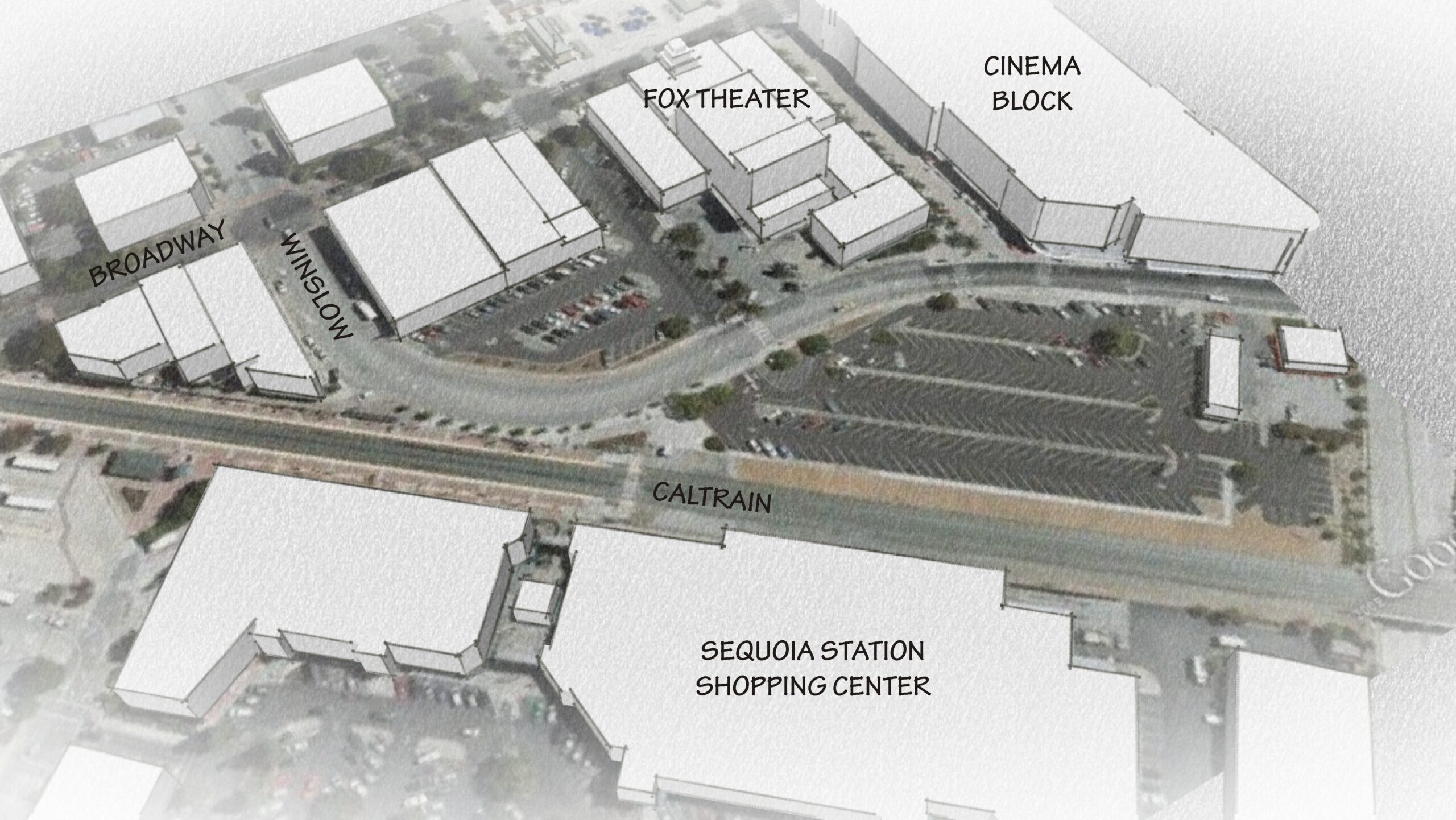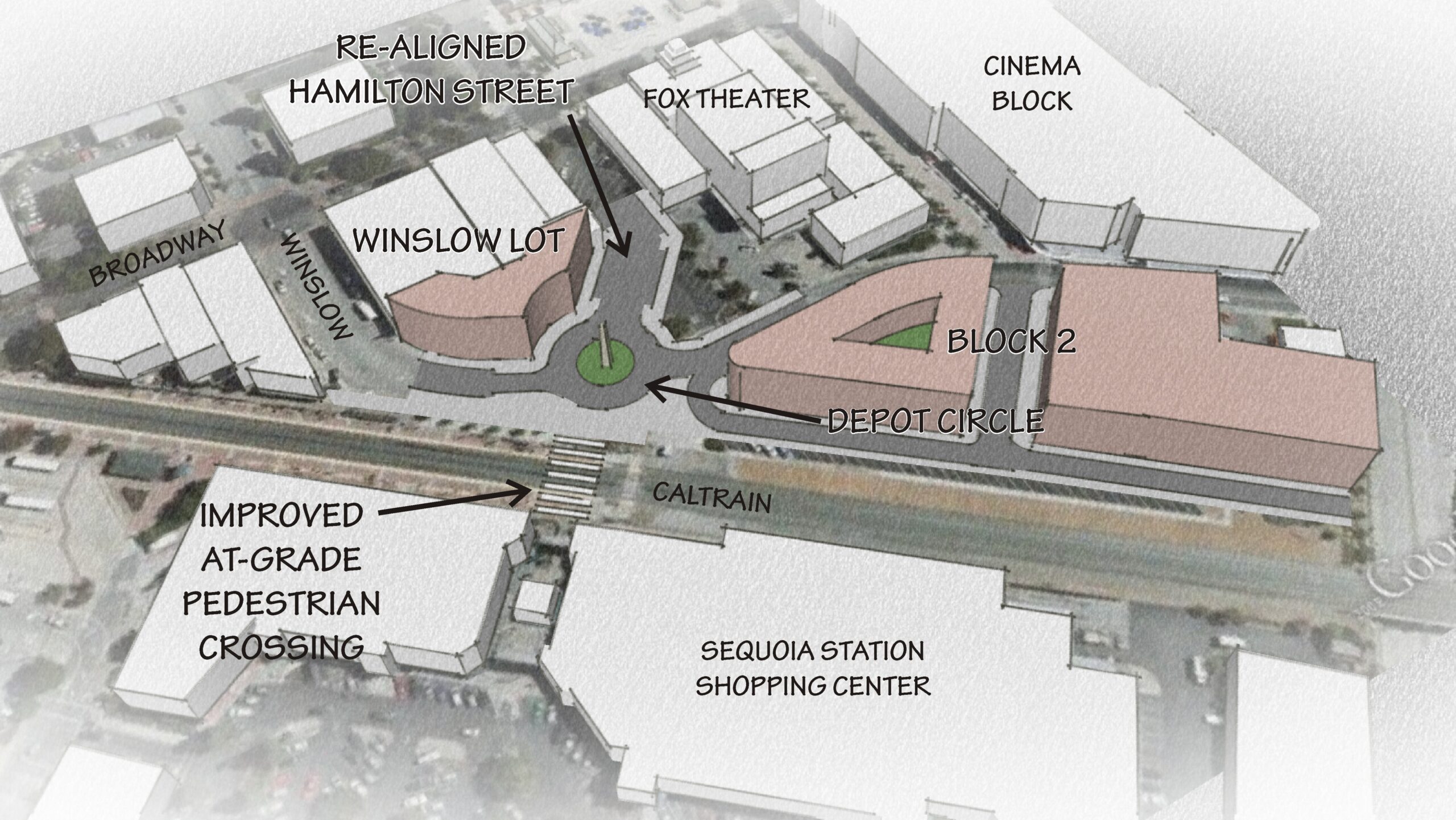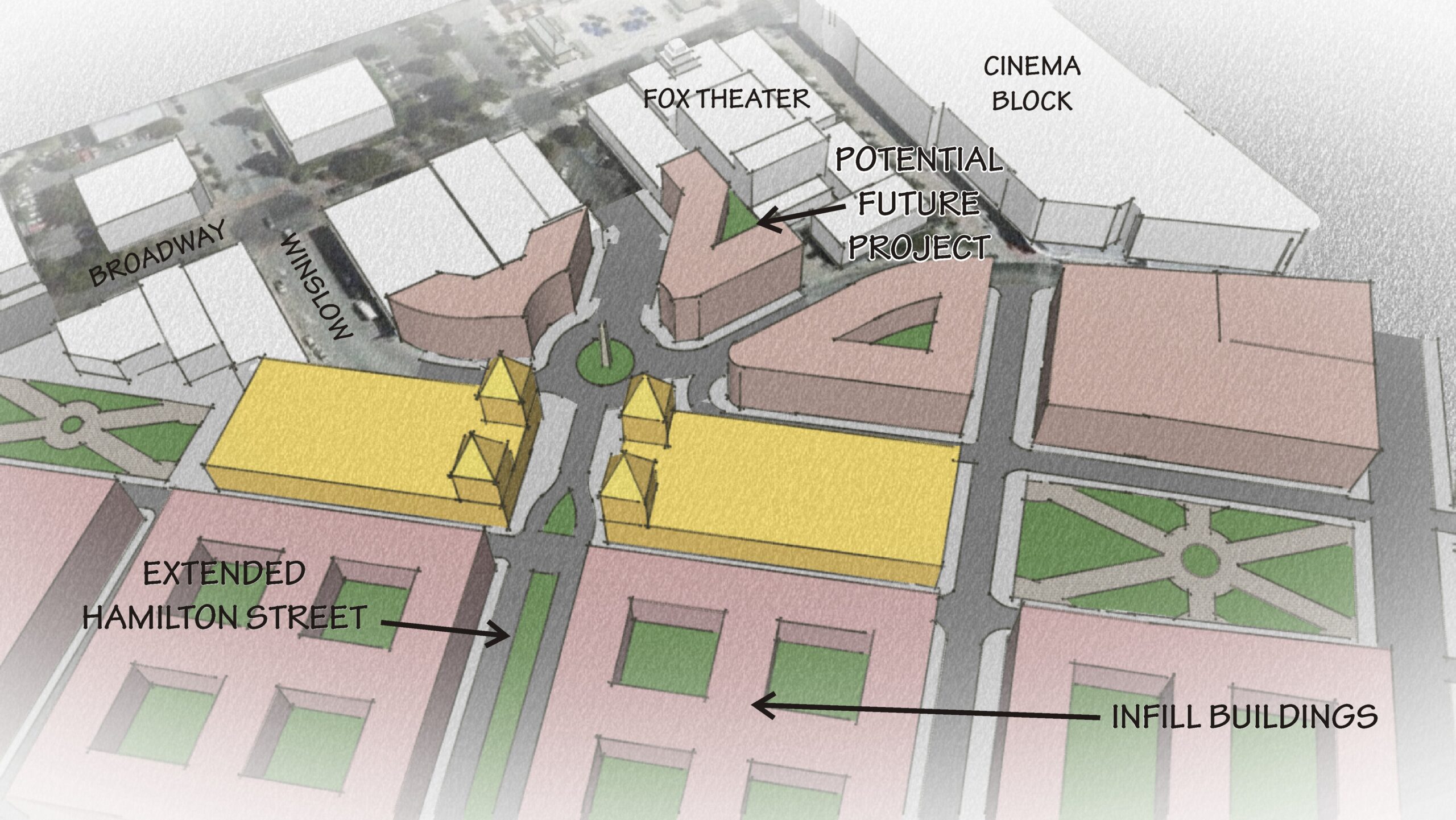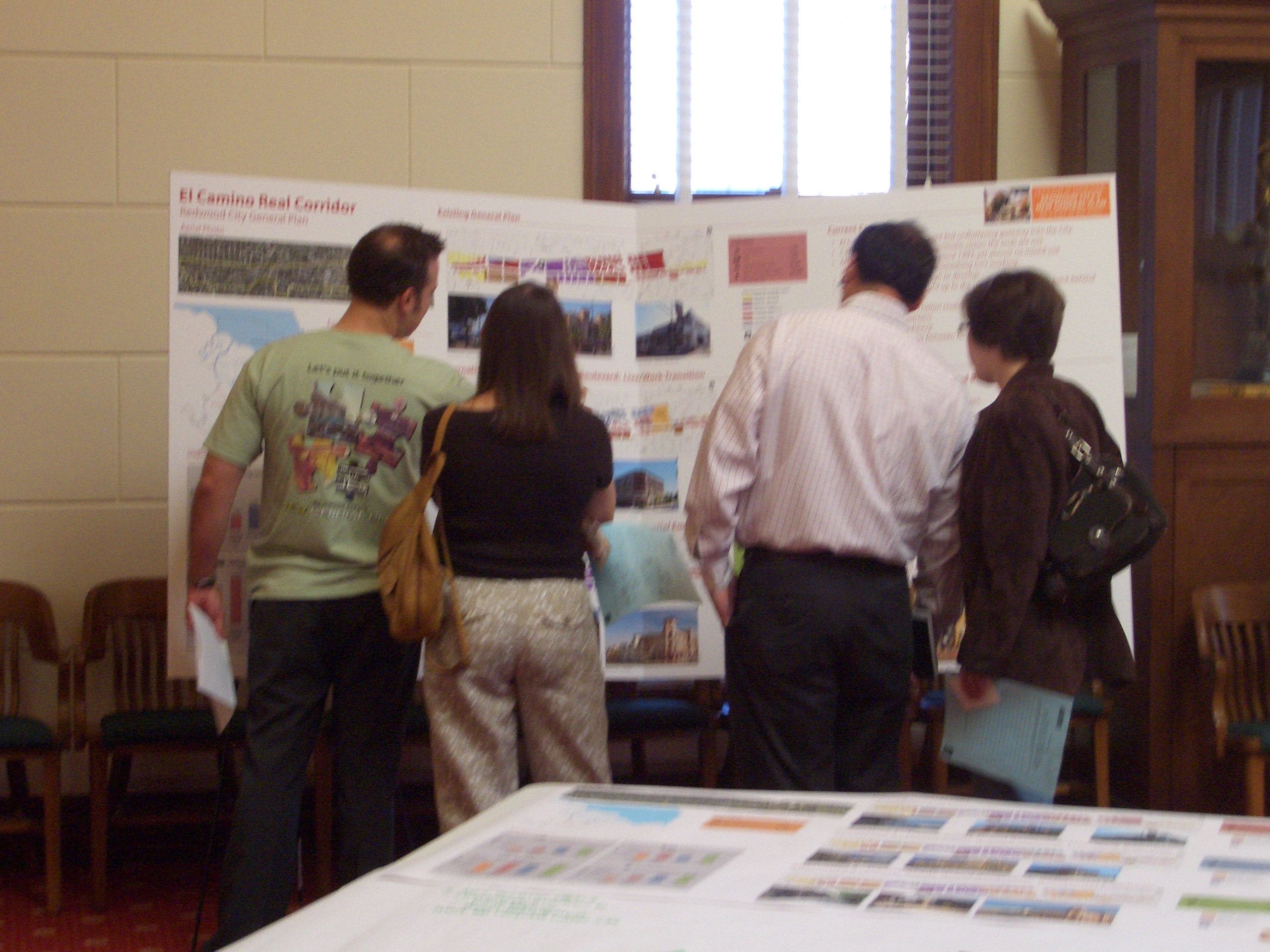What kind of community do you want to have in 20 years? If you don’t plan for it now, it won’t happen. When you are looking at a region, a city, or a neighborhood, a good long-range plan can help you put things on the right track for your community. ZUS founder Dan Zack has worked on plans at all of these scales. Furthermore, he has had to implement them as a city staffer, so he values creating plans that are workable after the dust settles and the hard work of making the vision come to life begins.
Examples of Zack’s long-range planning work include:
The Specific Plan of the West Area
Year(s): 2017 to 2020
Role: City Staff
Jurisdiction: City of Fresno
The portions of Fresno which lie west of west of Highway 99 are unusual and interesting, but they function poorly in many important ways: They are severely disconnected from the primary part of city, with very few crossings over the freeway; there are very few jobs, services, or amenities available within the area; and the physical form is a confluence of suburban subdivisions, rural residential homesteads, and working farms. Under the direction of Mr. Zack, the City’s Long-Range Planning staff undertook the creation of a specific plan for the west area completely in-house. The Specific Plan of the West Area will serve as the catalyst for development as well as a vital instrument for much needed infrastructure improvements. Work on the plan is ongoing.
Additional Information
Central Southeast Specific Plan
Year(s): 2017 to 2020
Role: City Staff
Jurisdiction: City of Fresno
During Mr. Zack’s time as the Assistant Planning Director that supervised the Long-Range Planning Division, his team began work on a specific plan for the Central Southeast Area. The Central Southeast Specific Plan will be a long-range planning document that provides a vision for growth and development in the community over the next 20 to 30-years. The Specific Plan will address a wide range of topics that impact the quality of life in this part of Fresno, including affordable housing, jobs and economic development, transportation, parks and open space, and a healthy environment. The Plan will include a vision, policies and if needed, development standards that will balance new development and preservation of the existing community identity. Mr. Zack created the project boundaries, wrote the Request for Proposals, oversaw the selection of Raimi and Associates as the consultant, supervised the early stages of plan creation, participated public workshops, and presented to the steering committee. The project is ongoing.
Additional Information:
Southwest Specific Plan
Year(s): 2015 to 2017
Role: City Staff
Jurisdiction: City of Fresno
During Mr. Zack’s time as the Assistant Planning Director that supervised the Long-Range Planning Division, his team created a specific plan for the Southwest Fresno. The Southwest Specific Plan is a long-range planning document that provides a vision for growth and development in the community over the next 20 to 30 years. The Specific Plan addresses a wide range of topics that impact the quality of life in this part of Fresno, including affordable housing, jobs and economic development, transportation, parks and open space, and a healthy environment. Mr. Zack oversaw the Request for Proposals and the selection of Placeworks as the consultant, supervised the plan creation, and participated public workshops, presented to the steering committee, and wrote the overlay zoning districts that implemented parts of the plan. The project was adopted by the City Council.
Additional Information:
Housing Element
Year(s): 2016
Role: City Staff
Jurisdiction: City of Fresno
During Mr. Zack’s time as the Assistant Planning Director that supervised the Long-Range Planning Division, his team created the Housing Element for Fresno’s 2015 to 2023 Regional Housing Needs Allocation. The Housing Element provides the City of Fresno with a coordinated and comprehensive strategy for promoting the production of safe, decent, and affordable housing for all community residents. The City of Fresno’s Housing Element provides direction for future planning programs to ensure that sufficient consideration is given to housing goals and policies; establishes community goals and policies relative to housing through the identification of existing, stated, and implicit goals, and the identification of housing needs and problems; and establishes and identifies programs intended to implement and attain the community’s goals and policies, taking into consideration the feasibility of those programs, and act as a meaningful guide to decision-makers considering housing-related issues. Mr. Zack oversaw the Request for Proposals and the selection of MIG as the consultant, supervised the plan creation, and participated public worked with the State office of Housing and Community Development to ensure compliance, and devised and effective way to accommodate a carryover RHNA from the previous cycle. The project was adopted by the City Council and certified by HCD.
Additional Information:
The Downtown Neighborhoods Community Plan and the Fulton Corridor Specific Plan
Year(s): 2014 to 2016
Role: City Staff
Jurisdiction: City of Fresno
These twin plans were developed and adopted in tandem. The Downtown Neighborhoods Community Plan is a vision document and revitalization strategy which was designed to stimulate private development and guide public investments in the predominantly residential neighborhoods surrounding the city’s mixed-use urban core, while the Fulton Corridor Specific Plan fulfilled the same role for the core. The initial drafts were developed by Moule and Polyzoides in partnership with a staff team. Mr. Zack was hired by the City of Fresno as Assistant Director of Planning and Development after the completion of the first draft and took over management of the project at that point. He conducted a final round of outreach with the steering committee and the community, revised the draft, added high-speed rail elements, completely re-wrote the implementing form-based code, redesigned the bicycle circulation map, revised proposed street sections, enhanced the implementation chapter, and presented the final drafts to the Planning Commission and City Council for adoption.
Additional Information:
The Fresno General Plan
Year(s): 2014
Role: City Staff
Jurisdiction: City of Fresno
The Fresno General Plan is a document that proposed a dramatic new vision for this large Central Valley city of 546,000 residents. It was adopted in 2014. For the first time in 60 years, the Sphere of Influence was not expanded as part of a new General Plan, and half of future growth was to be directed into infill areas; in the past nearly all growth occurred on the suburban edge. While employed as the City’s Assistant Director of Development and Resource Management, Dan Zack was a member of the core staff team that took over the plan it its final stages from the consultant on the project, Dyett & Bhatia, and prepared it for adoption. This included several workshops and community presentations, editing and re-writing, and changes to the Planned Land Use Map that were the result of City Council direction. He also worked on the Housing Element of the plan, which received certification from the Department of Housing and Community Development.
The implementation of such a groundbreaking plan was arduous work, and Mr. Zack lead the charge. Because of the new infill-focused direction for the community, new zoning regulations were required to make the vision a reality. The entirety of the Zoning Ordinance was repealed and replaced by a completely new set of regulations known as the Development Code. This document featured all new zoning districts, development standards, and procedures. Another round of robust public participation was required which entailed dozens of meetings with the building industry and neighborhoods groups. After the adoption of the Development Code the entire city needed to be rezoned in order to effectuate the new districts and regulations; this was another crucial implementation measure for the General Plan. Such a massive overhaul inevitably required fine tuning, and over a three-year period after the adoption Mr. Zack wrote and oversaw the adoption of five “clean ups” to the General Plan and Development Code to ensure their success.
Additional Information:
Transit Station Area Planning
Year(s): 2010 to 2014
Role: City Staff
Jurisdiction: City of Redwood City



Mr. Zack worked closely with staff from the Caltrain commuter rail system on design issues relating to the addition of a third track and the potential full grade separation to the corridor through Downtown Redwood City. In particular, Mr. Zack was charged with ensuring that such improvements were designed in a manner that will integrate seamlessly with transit-oriented development planned for the area and would not create a barrier through the center of Downtown.
Downtown Precise Plan, Version 2
Year(s): 2009 to 2011
Role: City Staff
Jurisdiction: City of Redwood City
The Downtown Precise Plan (DTPP) is a vision document, revitalization strategy, and form-based code which was designed to stimulate private development, particularly of well-designed pedestrian-oriented housing projects, in Redwood City’s 200-acre greater Downtown area. Developed by Freedman, Tung & Bottomley (now Freedman, Tung & Sasaki) in partnership with a staff team which included Mr. Zack, the first version of the DTPP was adopted in 2007 and immediately received positive attention, but was ordered to be repealed in 2009 by a court due to a CEQA lawsuit. Work began on a new version immediately thereafter. This time, the plan was completed in-house by City staff. Mr. Zack served as project manager; he created all of the new text and illustrations and redesigned the document’s layout. The second version of the DTPP was adopted in early 2011 and was not challenged. Developer interest materialized immediately, and within three years the DTPP had resulted in the entitlement of 1,239 housing units and 300,000 square feet of office space and within eight years 2,500 housing units had been produced. Today, Downtown Redwood City is one of the most active suburban downtowns in the San Francisco Bay Area. The DTPP was a runner up for the Form-Based Code of the Year award form the Form Based Code Institute in 2012.
Additional Information:
The Redwood City General Plan
Year(s): 2008 to 2010
Role: City Staff
Jurisdiction: City of Redwood City

The Redwood City General Plan is a visionary document that has guided growth during a period of major change in this San Francisco Bay Area community of 86,000. While employed as the Downtown Development Manager for the City of Redwood City, Dan Zack was a member of the core staff team that worked in conjunction with the consulting firm of Hogle-Ireland, Inc. (now part of MIG) for the development of the document, which was adopted in 2010. In this capacity he participated in public workshops, assisted in the development of the Planned Land Use Map, wrote narrative for parts of the document, edited much of the document, conducted development capacity analysis, assisted in the creation of development scenarios, took photographs for use in the plan, and wrote objectives and strategies for the Downtown area. He also worked on the Housing Element of the plan, which received certification from the Department of Housing and Community Development.
Mr. Zack was even more heavily involved in the implementation of the plan. The Downtown area was targeted for major growth and new zoning was needed to implement this vision. Mr. Zack was project manager for the Downtown Precise Plan, which included a refinement of the General Plan’s vision, a program of public improvements for the district, and a detailed form-based code to guide private investment. Since then, 2,500 homes have been developed in the city center. He was also on the staff team that worked with Hogle-Ireland on new zoning districts that had to be created to implement the vision for several key transportation corridors. The General Plan’s vision for these corridors—including El Camino Real, Woodside Road, Broadway, and Veterans Boulevard—was to transition them from car-oriented commercial strips to multi-modal streets were comfortable for motorists, transit riders, bicyclists, and pedestrians while intensifying the development pattern and blending the commercial uses with new housing and office uses.
Additional Information:
Downtown Precise Plan, Version 1
Year(s): 2004 to 2007
Role: City Staff
Jurisdiction: City of Redwood City
Mr. Zack was an integral member of the staff team that worked closely with the project consultant, Freedman, Tung, and Bottomley (now Freedman, Tung, and Sasaki), to develop this form-based code, which regulated land use and urban design in Redwood City’s 200-acre greater Downtown area. The first version of the Downtown Precise Plan (DTPP) won the award for best comprehensive plan in a small jurisdiction from the American Planning Association, Northern California Chapter. Work commenced on the in 2004. An intensive public participation process helped to create a framework for building heights, architectural styles, and activity centers upon which the consultant and staff team built the plan. An economic study was conducted by the Concord Group to ensure that the development standards in the plan would lead to the successful development of privately financed housing.
The DTPP Version 1 was adopted in 2007 and immediately received positive attention. Multiple entitlement applications were submitted within the first six months of the document’s life. Unfortunately, a property owner within the plan area filed a lawsuit invoking the California Environmental Quality Act (CEQA), alleging that the Environmental Impact Report (EIR) did not sufficiently assess the potential impacts of new development on historic resources and on shadows. During the time the case was being considered, and injunction prevent the City from approving entitlements for the Downtown area. While the City disagreed vehemently and fought the case, ultimately, they were unsuccessful and the plan was ordered to be repealed in 2009. Work began on a new version immediately thereafter.
Additional Information:
Highway 99 Beautification Plan
Year(s): 1999 to 2000
Role: Agency Staff
Jurisdiction: Fresno Council of Governments
Highway 99 acts as the spine of Fresno County—one of the most productive agricultural counties in the nation—but its appearance in the late 1990s we unpleasant at best. It was largely unlandscaped, unadorned, and dominated by billboards. The Highway 99 Beautification Plan was developed to rectify that. Mr. Zack wrote the Request for Qualifications and the Request for Proposals for the project and also led the consultant interview and selection process. As project manager he oversaw creation of the beautification plan as the project manager, worked closely with the consultant RRM Design Group on the content of the plan, made all public presentations of the plan, and took the item for adoption to three municipalities and the County, and secured the support of the local district of Caltrans. Many of the envisioned right-of-way improvements were successfully implemented.
Highway 99 Beautification Committee Liaison
Year(s): 1999 to 2003
Role: Agency Staff
Jurisdiction: Fresno Council of Governments
Mr. Zack served as staff liaison to the committee steering the creation and implementation of the Highway 99 Beautification Plan. He wrote the committee’s bylaws, created their agendas, helped run meetings, wrote all of their official correspondence, and provided other staff support necessary to implement the Beautification Plan.
2001 Regional Housing Needs Allocation Plan
Year(s): 2000 to 2001
Role: Agency Staff
Jurisdiction: Fresno Council of Governments
In this Fresno COG project, Mr. Zack devised the calculations necessary to fairly distribute the housing allocation among 15 cities and the County, and assisted in overall development of document. Mr. Zack worked closely with census data to develop a jurisdiction-by-jurisdiction analysis of housing needs in for various income groups based on projected growth. This work was conducted entirely in-house, without consultant support.
Additional Information:
- Final Report
2001 Regional Transportation Plan
Year(s): 2000 to 2001
Role: Agency Staff
Jurisdiction: Fresno Council of Governments
As a staff planner at the COG, Mr. Zack participated heavily in the creation of the 2001 Regional Transportation Plan. He designed the document layout, assembled and edited text contributions from over a dozen authors, assisted with public workshops, created all maps, and authored the Executive Summary.
1998 Regional Transportation Plan
Year(s): 1998
Role: Agency Staff
Jurisdiction: Fresno Council of Governments
As a staff planner at the COG, Mr. Zack participated heavily in the creation of the 1998 Regional Transportation Plan. He designed the document layout, assembled and edited text contributions from over a dozen authors, assisted with public workshops, and created all maps.
Corcoran General Plan
Year(s): 1994 to 1995
Role: Consultant
Client: City of Corcoran
Mr. Zack assisted in the preparation of the Land Use Element for the Corcoran General Plan while working as a planning technician for Valley Planning Consultants.
Chowchilla General Plan
Year(s): 1994 to 1995
Role: Consultant
Client: City of Corcoran
Mr. Zack conducted a Housing Quality Survey for the Redevelopment Element of the Chowchilla General Plan while working as a planning technician for Valley Planning Consultants.
Los Banos General Plan
Year(s): 1994 to 1995
Role: Consultant
Client: City of Los Banos
While working as a planning technician for Valley Planning Consultants, Mr. Zack conducted analysis and research for the Circulation Element and created the Existing Land Use map for the Los Banos General Plan.

